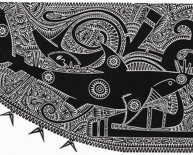
Australian Religions
ABOUT THE CLASSIFICATION
Religious affiliation provides a useful indicator of aspects of the cultural diversity of Australia's society. The first edition of the Australian Standard Classification of Religious Groups (ASCRG) was published in 1996 and the second edition was published in 2005. The need for periodic reviews to reflect changes in the religious profile of Australia was foreshadowed when the ASCRG was first released. A minor review was conducted in 2011 with minimal change.
A review of the ASCRG in 2016 resulted in a number of changes at the broad, narrow and religious group levels of the classification. These changes are shown in the 'what has changed' page. The 2016 classification (along with its indexes and correspondences tables) is available in Excel from the 'Downloads' tab.
Classification uses
The ASCRG is for use in collecting, aggregating and disseminating data relating to the religious affiliation of the Australian population. It is used to classify religious affiliation data from Australian Bureau of Statistics (ABS) surveys and the Census of Population and Housing. Its use is also recommended in administrative data collections where there is a need to collect religious affiliation.
Data classified by religion can be used for policy and planning purposes related to the location and development of educational facilities and church buildings, aged persons' care facilities and services, and the provision of other social services by religious organisations. It may also be used in sociological research, and in assigning chaplains and other care providers to hospitals, prisons, armed services, universities, and other institutions, and to determine the allocation of time to community groups on public radio and in other media.
First edition of the ASCRG 1996
The first edition of the ASCRG was developed by the ABS after extensive research of Australian and overseas literature, and analysis of existing data relating to the religious profile of Australia (primarily data from the 1991 Census of Population and Housing). This was supported by information and advice from academics and religious experts, consultation with community and religious groups interested in this topic and the application of statistical principles and techniques relating to statistical classification.
In the classification, religious groups are arranged into progressively broader categories on the basis of similarity in terms of religious beliefs, religious practices and the cultural heritage of adherents. This results in those religious groups which are closely related in terms of their intrinsic characteristics being closely aligned in the structure of the classification. Therefore, people with similar religious beliefs are grouped together to produce a classification that is useful for both social analysis and planning purposes.
Analysis of responses to previous ABS Censuses of Population and Housing identified religious groups with large numbers of affiliated persons, such as Christian denominations, which were then extensively identified in the classification. Those religions with a small number of affiliated persons were not separately identified in the classification structure but were included in appropriate residual categories.
The identification of individual religions or denominations in the classification, and the way in which they are grouped, does not imply the expression of any opinion on the part of the ABS concerning the relative merit or importance of particular religions or the people who practice them.
Second edition of the ASCRG 2005
The second edition (2005 revision) of the classification included changes to the structure of the classification and the renaming of some religious groups. At the four-digit level, the structure was expanded from 107 religious groups to 115. The number of narrow groups reduced from 33 to 32. No changes were made at the broad group level.
The 2011 minor review of the classification resulted in minimal change. There was no change to the number of religious groups, narrow groups or broad groups.
Third edition of the ASCRG 2016
The third edition of the classification, published in 2016, included changes to the structure of the classification and the renaming of some religious groups. At the four-digit level, the structure was expanded from 115 to 131 religious groups. The number of narrow groups increased from 32 to 34. An expansion of broad group 7 has enabled the ABS to reduce the reliance on supplementary codes to produce meaningful data from responses which would not code to any of the major world religions. Seven supplementary codes have been made redundant.
DEFINITION OF RELIGION
A precise definition of the concept of religion, or of what generally constitutes a 'religion', is difficult, because of the intangible and wide-ranging nature of the topic.
Generally, a religion is regarded as a set of beliefs and practices, usually involving acknowledgment of a divine or higher being or power, by which people order the conduct of their lives both practically and in a moral sense.
This method of defining religion in terms of a mixture of beliefs, practices, and a supernatural being giving form and meaning to existence, was used by the High Court of Australia in 1983. The High Court held that 'the beliefs, practices and observances of the Church of the New Faith (Scientology) were a religion in Victoria'.
As part of the ruling, it was stated that:
For the purposes of the law, the criteria of religion are twofold: first, belief in a Supernatural Being, Thing or Principle; and second, the acceptance of canons of conduct in order to give effect to that belief, though canons of conduct which offend against the ordinary laws are outside the area of any immunity, privilege or right conferred on the grounds of religion.
The above definition is useful in describing the nature of all the entities included in the classification, apart from the renamed broad group 7 'Secular Beliefs and Other Spiritual Beliefs and No Religious Affiliation'.

















